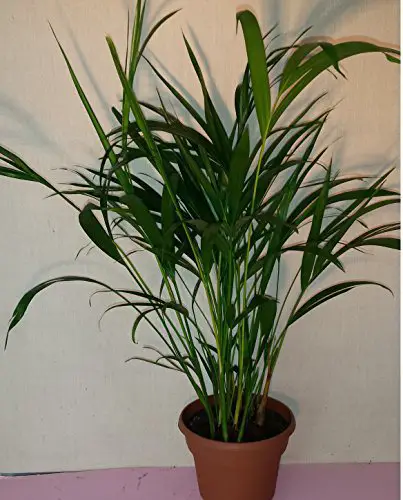Being indoors is not always a choice we have. Many of our jobs require us to do our work from inside (office, building, home). Much of our errands tend to take place indoors too: shopping for groceries, going to see the dentist, picking up your child’s birthday party decorations. And some of us even prefer to spend our free time sprawled out on the couch watching Netflix or cozying up in our bed with a good book. Thus, it should come as no surprise that the majority of us spend as much as 90% of our lives indoors.
But did you know that indoor air is actually worse than outdoor air?
According to the Environmental Protection Agency (EPA), the environment indoors is two to fives times more toxic than the environment outdoors. Moreover, air measurements have shown that in some cases, the air indoors is 100 times more polluted than the air outside.
The three main household toxins of concern are:
- benzene
- formaldahyde
- trichloroethylene
These carcinogenic chemicals are found in many household cleaning products. Poor ventilation, mould and smoking also contribute to the unclean air inside. Research has concluded that 80% of all cancers are a result of environmental factors, rather than genetic ones. In addition, our exposure to indoor pollutants may be a contributing cause of autism, allergies and toxin load.
But before you run outdoors, there’s a simple botanical solution to this problem. Keeping one of the following plants in your home will help you bring that breath of fresh air inside.
1. Areca Palm

Benefits: Helps to remove toluene and xylene from the air and can help to increase overall air purification. Great for those who may have asthma or require effective air purification.
2. Money Plant

Benefits: Helps to reduce the toxins benzene, formaldehyde, toluene and xylene from the air. It can also help to increase overall air quality and purification. Great for asthmatics, those with lung conditions, and people who are exposed to high city smog living conditions.
3. Spider Plant

Benefits: Promotes high air purification. It’s suitable for helping to decrease exposure to formaldehyde, toluene, and xylene. Great for placing in homes that have been freshly painted. Also suitable for apartments or homes that are exposed to big city chemical air pollutants.
4. Purple Waffle Plant

Benefits: Helps to remove formaldehyde from the air. It can help to increase overall air purification, and is suitable for increasing the quality of the air within any home. Great for city homes that are exposed to smog and car fumes. It may also help those who live near industrial factories.
5. Bamboo Palm

Benefits: Helps to remove formaldehyde and is suitable for acting as a natural humidifier for most indoor areas. It can also help to remove xylene and toluene. Great for those who live in high air pollution areas and areas where car fume exposure exists. Suitable for placing in homes or shops which may be exposed to gasoline.
6. Variegated Wax Plant

Benefits: Helps to improve overall air quality by removing benzene and formaldehyde from the air. This plant can also increase overall air purification. Can help people who suffer from lung conditions such as emphysema or asthma. It’s also beneficial for those who are exposed to car fumes, petrol, paint fumes, industrial or city smog, or heavy cleaning products.
7. Lilyturf

Benefits: Helps to remove ammonia, toluene, xylene, and formaldehyde from the air. This plant is capable of increasing oxygen levels and can help to improve air quality. Great for people who are exposed to cleaning products, paint fumes, city or factory smog, or vehicle fumes. This plant can help clean the air for those with common lung conditions including emphysema and asthma.
8. Boston Fern

Benefits: Helps to remove formaldehyde from the air and is said to act as a natural type of air humidifier. This plant can also remove xylene and toluene. It is said to be one of the best houseplants for air purification. Great for those living or working in areas where exposure to gasoline exists. They’re ideal for homes exposed to city smog, and are suitable for those who may have asthma or breathing conditions.
9. Dwarf Date Palm

Benefits: Helps to reduce common toxins xylene, toluene, and formaldehyde from the air. This plant can also help to promote increase oxygen levels, and is able to improve air quality in highly exposed areas. Great for placing in homes that may be exposed to paint fumes, factory smog, car fumes, or heavy cleaning solvents. It can help improve air quality for asthmatics and those with different lung conditions.
10. Moth Orchids

Benefits: Ideal for helping to increase purification of the air within homes. They are suitable for removing xylene and toluene and can increase air quality. Great for homes that are exposed to factory or city smog, smoke, or fumes. They are also suitable for homes which are freshly painted or where paint fumes exist.
11. Barberton Daisy

Benefits: Great plant for removing benzene, formaldehyde, and trichloroethylene from your home. It is ideal for increasing the overall oxygen levels within the home and can help purify the air. Best for homes and people who are exposed to fuel fumes, car fumes, factory or large city smog, and smoke. It can also help those who are exposed to heavy cleaning solvents.
Sources:
http://www.sustainablebabysteps.com/types-of-houseplants.html
https://www.aspca.org/pet-care/animal-poison-control/toxic-and-non-toxic-plants/areca-palm
http://www.aspca.org/about-us/faq/money-tree
http://www.aspca.org/pet-care/animal-poison-control/toxic-and-non-toxic-plants/spider-plant
http://www.aspca.org/pet-care/animal-poison-control/toxic-and-non-toxic-plants/purple-waffle-plant
https://www.aspca.org/pet-care/animal-poison-control/toxic-and-non-toxic-plants/bamboo-palm
https://www.aspca.org/pet-care/animal-poison-control/toxic-and-non-toxic-plants/variegated-wax-plant
http://www.aspca.org/pet-care/animal-poison-control/toxic-and-non-toxic-plants/turf-lily
http://www.aspca.org/pet-care/animal-poison-control/toxic-and-non-toxic-plants/boston-fern
http://www.aspca.org/pet-care/animal-poison-control/toxic-and-non-toxic-plants/dwarf-date-palm
http://www.aspca.org/pet-care/animal-poison-control/toxic-and-non-toxic-plants/phalaenopsis-orchid
https://www.aspca.org/pet-care/animal-poison-control/toxic-and-non-toxic-plants/barberton-daisy

